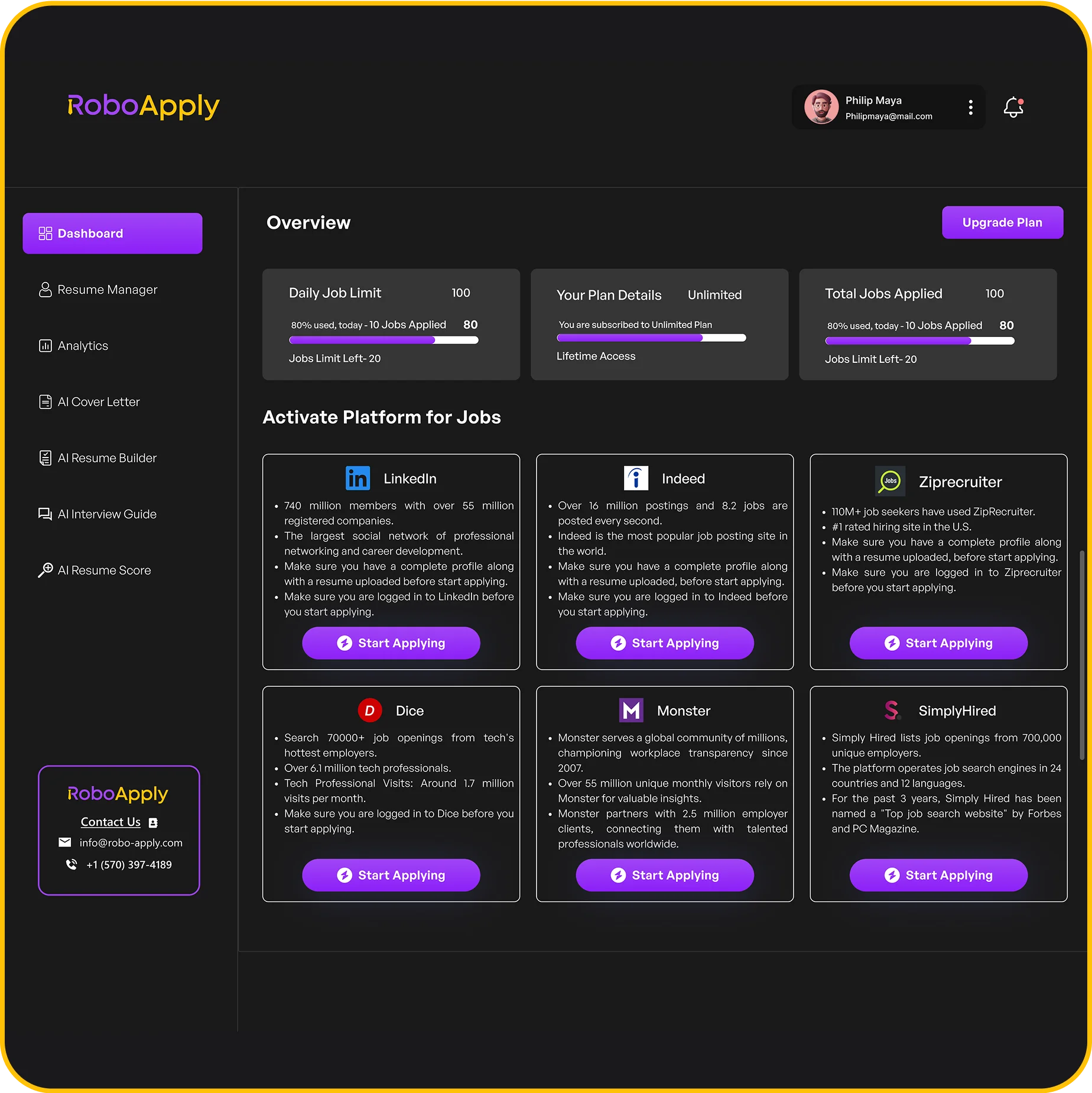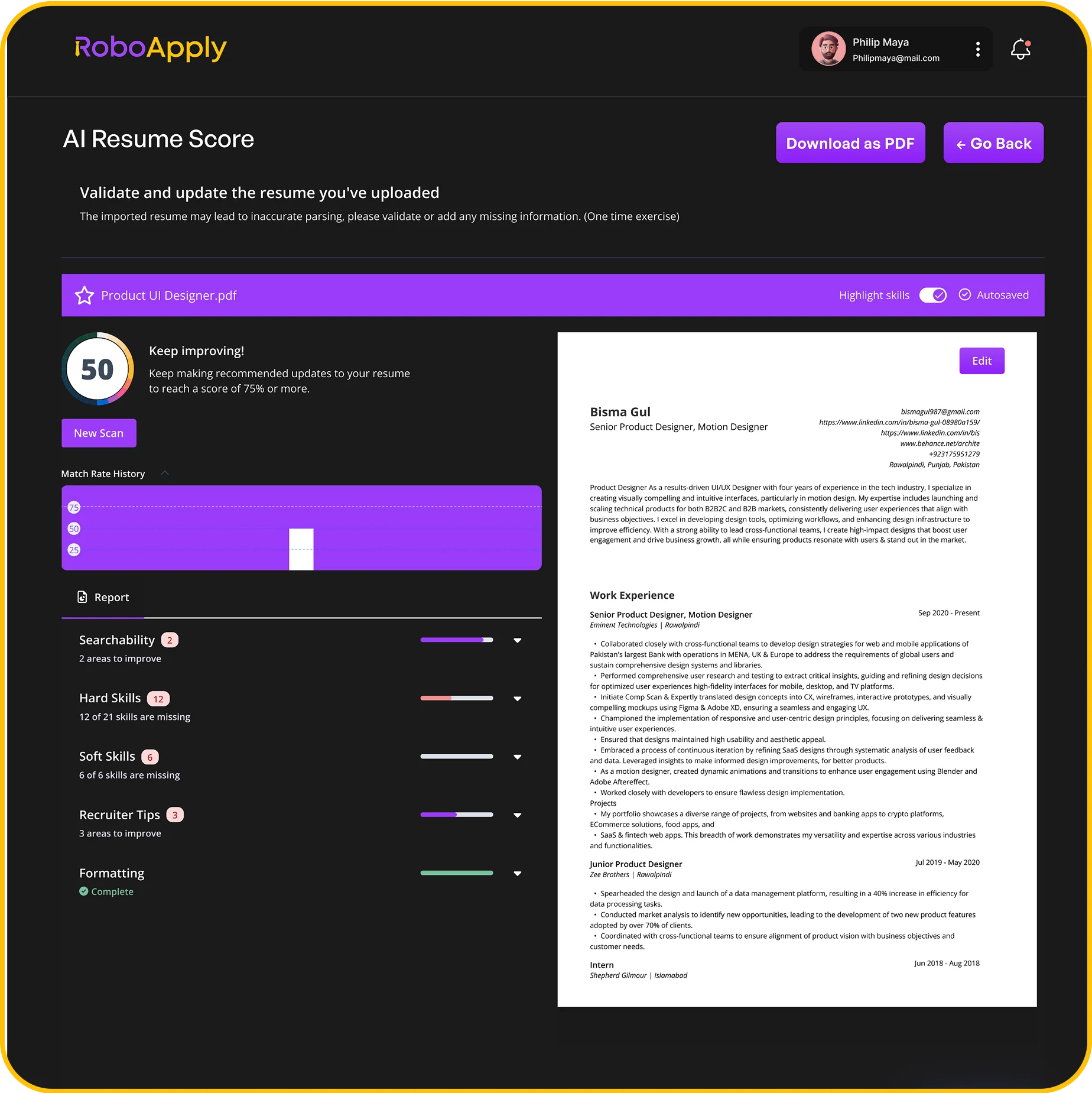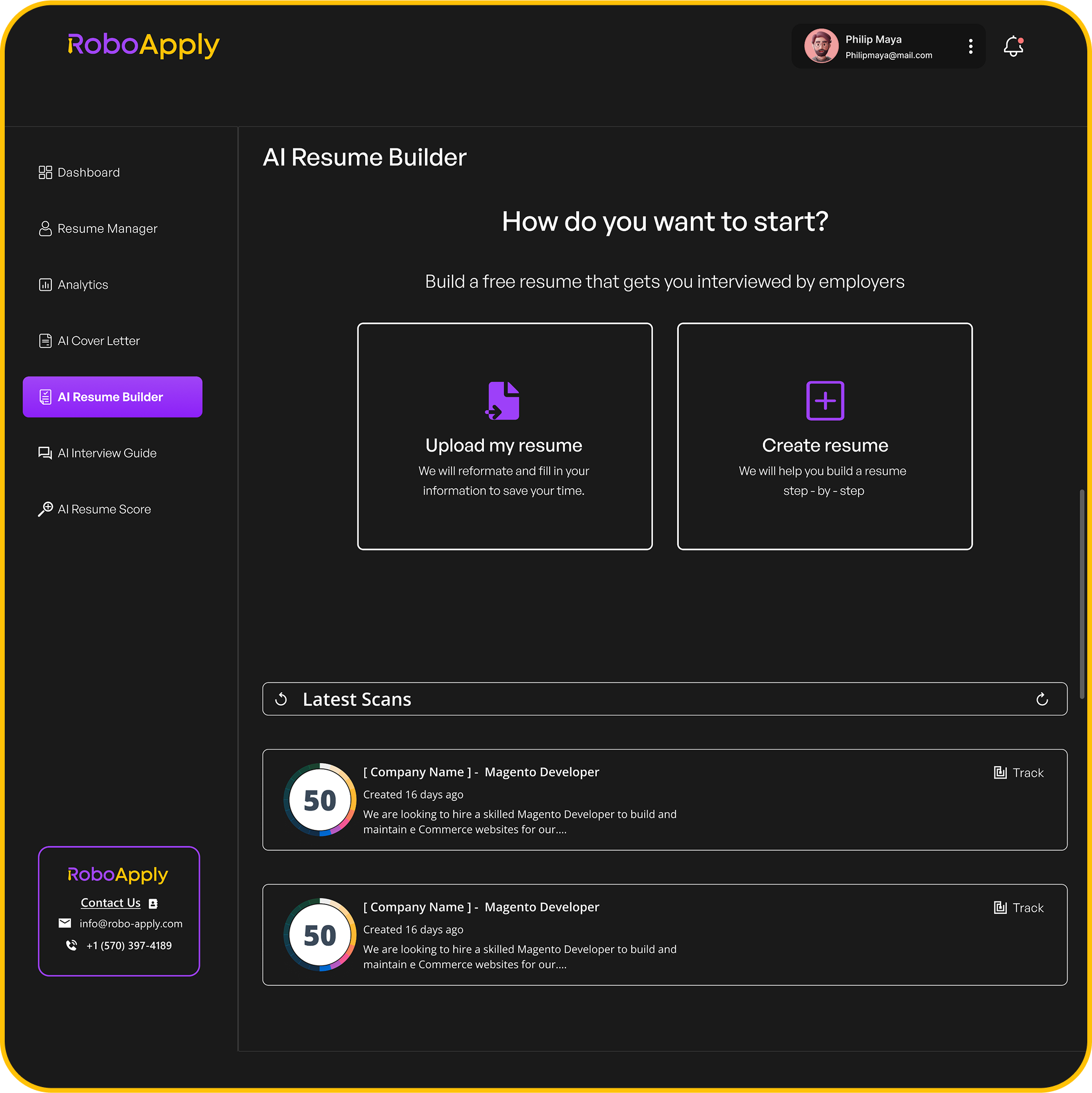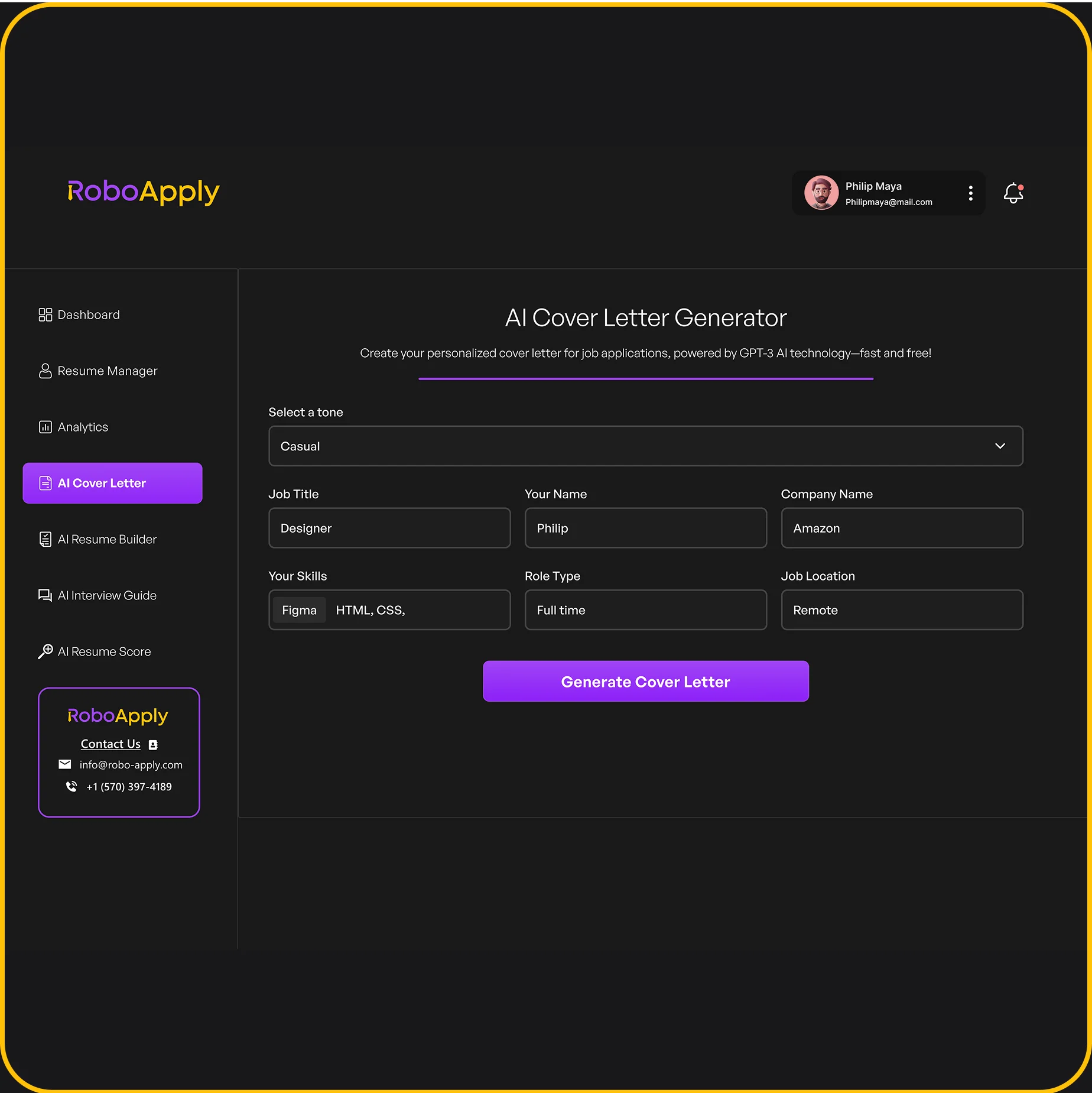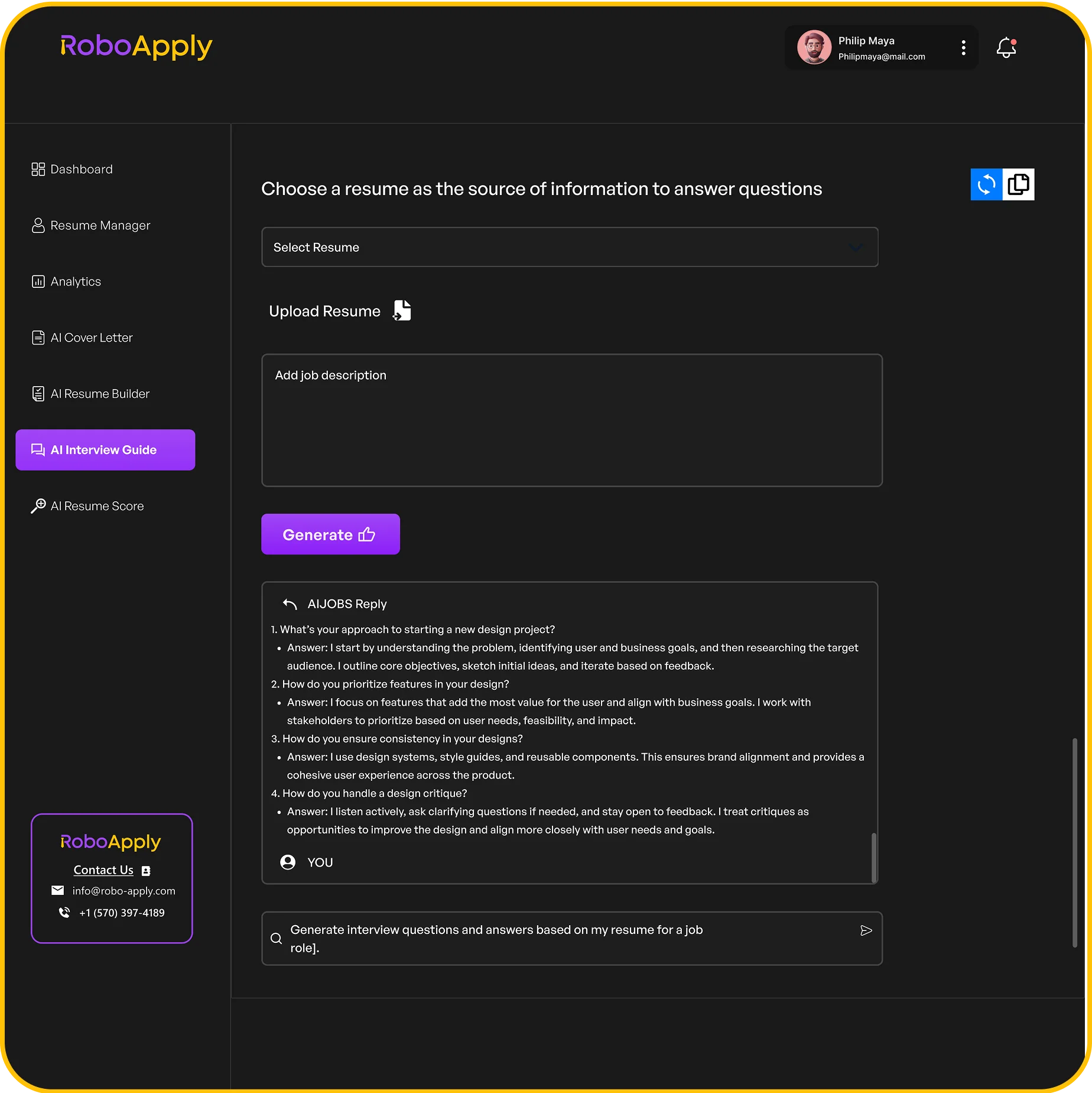Thinking about your job search as a machinist? It can be a bit tricky to stand out, right? Your resume is super important for showing what you can do. We put together 13 different machinist resume examples for 2025. These should give you some good ideas and help you make your own resume look great. Whether you’re just starting out or have been doing this for years, there’s something here for you.
Key Takeaways
- Make sure your resume highlights specific skills like CNC operation or manual machining.
- Show your experience with different machines and tools.
- Include numbers when you can, like how much you improved production.
- Tailor your resume for each job you apply for.
- Proofread everything carefully before sending it out.
1. CNC Machinist
CNC machinists are in demand, and your resume needs to show you’re the right fit. It’s not just about listing skills; it’s about showing how you’ve used them to get results. Think about specific projects, improvements you’ve made, and how you’ve contributed to efficiency or quality. RoboApply can help you tailor your resume to highlight these achievements, making sure your application stands out.
A CNC machinist resume should highlight your proficiency in programming, operating, and maintaining CNC machines. It’s also important to show your understanding of blueprints, technical drawings, and safety procedures. Let’s look at how to make your resume shine.
Here’s an example of how you might structure your CNC machinist resume:
[Your Name]
[Your Contact Information]
Summary
A highly skilled and experienced CNC Machinist with [Number] years of experience in operating, programming, and maintaining CNC machines. Proven ability to interpret technical drawings, troubleshoot issues, and ensure high-quality production. Seeking a challenging position where I can utilize my skills and contribute to the success of a dynamic manufacturing environment. RoboApply can help you create a compelling summary like this.
Skills
- CNC Programming (G-code, M-code)
- Operating CNC Mills and Lathes
- Blueprint Reading
- Precision Measurement
- Troubleshooting and Maintenance
- Quality Control
- CAD/CAM Software (e.g., AutoCAD, SolidWorks)
- Safety Procedures
- GD&T
Experience
CNC Machinist | [Company Name] | [City, State] | [Dates of Employment]
- Programmed, set up, and operated CNC milling and turning machines to produce precision parts.
- Interpreted blueprints, technical drawings, and specifications to determine machining requirements.
- Performed routine maintenance and troubleshooting on CNC machines to ensure optimal performance.
- Conducted quality control inspections using precision measuring instruments to verify conformance to specifications.
- Improved machining processes, resulting in a 15% increase in production efficiency.
Education
[Degree/Certification] | [Institution Name] | [City, State] | [Year of Graduation]
Tips for a Strong CNC Machinist Resume:
- Quantify your achievements whenever possible. Use numbers to show the impact you’ve made in previous roles. For example, "Reduced scrap rate by 10%" or "Increased production output by 15%."
- Tailor your resume to each job application. Highlight the skills and experience that are most relevant to the specific position. RoboApply can help you customize your resume quickly and efficiently.
- Use action verbs to describe your responsibilities and accomplishments. Examples include "programmed," "operated," "maintained," and "improved."
A well-crafted CNC machinist resume should clearly demonstrate your technical skills, experience, and attention to detail. It should also highlight your ability to work independently and as part of a team. Make sure to proofread your resume carefully for any errors before submitting it.
Consider adding certifications like NIMS (National Institute for Metalworking Skills) to boost your resume. These certifications show employers that you have a standardized level of competence. Also, don’t forget to mention any experience you have with specific types of CNC machines or software that are relevant to the job you’re applying for. For example, if the job requires experience with Fanuc controls, make sure to highlight that on your resume. You can also use resume samples to assist in crafting a professional resume for this role. Remember to use RoboApply to streamline your job search and application process. For mechanical engineers, showcasing hands-on skills is beneficial, so use a chronological format to highlight your work experience, similar to the advice in these mechanical engineer resume examples. Also, remember to tailor your resume to each job application, highlighting the skills and experience that are most relevant to the specific position, just like these industrial engineer resume examples show.
2. Manual Machinist
Manual machinists are the backbone of precision manufacturing, relying on skill and experience to shape materials using traditional machines. It’s a hands-on job, requiring a deep understanding of materials and techniques. Let’s look at how to highlight those skills in your resume.
Think of a manual machinist as an artist with metal. They use lathes, mills, and grinders to create parts according to blueprints or specifications. It’s a craft that demands patience and precision. Your resume needs to show you’ve got both.
Here’s an example of how you might present your experience:
Machinist | Acme Manufacturing | 2018 – Present
* Fabricated precision components using manual lathes, mills, and grinders.
* Interpreted blueprints and technical drawings to meet exact specifications.
* Maintained and repaired machinery, ensuring optimal performance and safety.
* Inspected finished parts using precision measuring instruments (calipers, micrometers).
* Trained junior machinists in proper techniques and safety procedures.
A strong manual machinist resume emphasizes your ability to work independently, solve problems, and maintain equipment. Highlight any experience you have with specific materials or industries. Don’t forget to mention your knowledge of safety procedures.
Here are some tips to make your manual machinist resume stand out:
- Quantify your achievements whenever possible. For example, "Reduced scrap rate by 15% through improved machining techniques."
- Tailor your resume to the specific job requirements. Read the job description carefully and highlight the skills and experience that match.
- Use action verbs to describe your responsibilities and accomplishments. Examples include "fabricated," "interpreted," "maintained," and "inspected."
- Proofread your resume carefully for errors in grammar and spelling. A polished resume shows attention to detail.
- Consider using a tool like AI resume builder to help you create a professional-looking resume quickly.
Remember, your resume is your first impression. Make it count by showcasing your skills and experience as a manual machinist. You can also find more advice and samples to enhance a manual machinist’s resume online.
3. Journeyman Machinist
A Journeyman Machinist resume needs to show you’ve completed an apprenticeship and have a solid understanding of machining principles. It’s about demonstrating your ability to work independently and handle complex projects. Basically, you’re not just pushing buttons; you’re making decisions and solving problems.
Your resume should highlight your experience with various machines, materials, and techniques. It’s about showing you’re a well-rounded machinist who can tackle anything that comes your way. RoboApply can help you tailor your resume to specific job descriptions, ensuring you highlight the most relevant skills and experience.
Here’s what to keep in mind:
- Showcase your experience with different types of machines (CNC, manual, etc.).
- Quantify your achievements whenever possible (e.g., "Reduced production time by 15%").
- Tailor your resume to each job application, highlighting the skills and experience most relevant to the specific position.
A Journeyman Machinist resume should clearly communicate your ability to work independently, solve problems, and contribute to a team. It’s about showing you’re not just a skilled operator, but a valuable asset to any manufacturing operation.
Here’s an example of how you might structure your work experience section:
Journeyman Machinist
Acme Manufacturing, Anytown, USA
2018 – Present
- Operated and maintained CNC milling machines, producing precision parts for aerospace applications.
- Troubleshot and resolved machining issues, minimizing downtime and maximizing production efficiency.
- Trained and mentored entry-level machinists, ensuring adherence to quality standards and safety procedures.
- Collaborated with engineers to optimize machining processes, resulting in a 10% reduction in material waste.
Remember to use action verbs and quantify your accomplishments whenever possible. A well-crafted Journeyman Machinist resume ATS-friendly samples can significantly increase your chances of landing an interview.
4. Entry-Level Machinist
So, you’re just starting out? Awesome! An entry-level machinist resume is all about showing potential. You might not have years of experience, but you can highlight your training, education, and eagerness to learn. Focus on the skills you do have and how they can benefit the company. RoboApply can help you tailor your resume to specific job descriptions, making sure you emphasize the most relevant qualifications.
Here’s what to keep in mind:
- Emphasize your education and training. Did you complete a vocational program? List it! Any relevant coursework? Include that too.
- Showcase your technical skills. Even basic knowledge of tools and machinery is a plus.
- Highlight your soft skills. Things like problem-solving, attention to detail, and teamwork are super important.
Don’t be afraid to mention projects you’ve worked on, even if they were just for school. They demonstrate your ability to apply what you’ve learned. Also, a well-crafted objective statement can really grab the reader’s attention.
Here’s a basic example:
[Your Name]
[Your Phone Number] | [Your Email] | [Your LinkedIn Profile (Optional)]
Objective
Enthusiastic and detail-oriented recent graduate of [Name of Vocational Program] seeking an entry-level machinist position at [Company Name]. Eager to apply technical skills and contribute to a team-oriented environment while learning and growing within the company. Check out these resume tips to make sure you’re on the right track.
Education
[Name of Vocational Program/School], [City, State] – [Completion Date/Expected Completion Date]
- Relevant Coursework: [List relevant courses, e.g., Blueprint Reading, CNC Programming Basics, Precision Measurement]
Skills
- Basic knowledge of manual machining tools (lathes, mills)
- Familiarity with precision measurement instruments (calipers, micrometers)
- Ability to read and interpret technical drawings
- Basic understanding of CNC programming (G-code)
- Strong problem-solving skills
- Excellent attention to detail
- Teamwork and communication skills
Projects
[Project Name 1] – [Brief Description of Project and Your Role]
[Project Name 2] – [Brief Description of Project and Your Role]
Certifications (If Applicable)
[List any relevant certifications]
Remember to tailor this template to the specific job you’re applying for. Good luck! It’s also a good idea to consider if a cover letter is needed for your application.
5. Aerospace Machinist
Aerospace machinists need to be super precise. Tight tolerances are the name of the game, and you’re often working with exotic materials. Your resume needs to show you get that.
Here’s what an aerospace machinist resume might look like:
[Your Name]
[Your Contact Information]
Summary
Highly skilled Aerospace Machinist with [Number] years of experience in manufacturing precision components for the aerospace industry. Proven ability to interpret complex blueprints, operate advanced CNC machinery, and maintain strict quality control standards. Seeking a challenging role to contribute to the success of a leading aerospace company.
Skills
- CNC Programming (G-Code, Mastercam)
- Blueprint Reading (GD&T)
- Precision Measurement (Calipers, Micrometers)
- Materials Knowledge (Aluminum, Titanium, Composites)
- Quality Control (AS9100 Standards)
- Problem-Solving
- Teamwork
Experience
Aerospace Machinist | [Company Name] | [City, State] | [Dates of Employment]
- Manufactured precision components for aircraft engines and airframes, adhering to strict AS9100 standards.
- Operated and maintained CNC milling and turning machines, ensuring optimal performance and accuracy.
- Inspected finished parts using precision measuring instruments, verifying compliance with engineering specifications.
- Collaborated with engineers to troubleshoot manufacturing issues and improve production processes.
Machinist | [Previous Company Name] | [City, State] | [Dates of Employment]
- Set up and operated manual lathes and milling machines to produce a variety of parts.
- Read and interpreted blueprints and technical drawings.
- Performed routine maintenance on machinery.
Education
Associate of Applied Science in Machine Technology | [College Name] | [City, State] | [Year of Graduation]
Certifications
- [Relevant Certifications, e.g., NIMS]
When you’re writing your resume, really focus on the specific machines and materials you’ve worked with. Aerospace is a specialized field, so the more specific you can be, the better.
Here are some things to keep in mind:
- Highlight your experience with specific materials: Aerospace uses a lot of specialized materials like titanium, Inconel, and composites. If you’ve worked with them, make it clear.
- Mention any relevant certifications: Certifications like NIMS (National Institute for Metalworking Skills) can show you have the skills and knowledge needed for the job.
- Quantify your achievements: Instead of just saying you "improved production," say you "improved production by 15% by optimizing CNC programs."
RoboApply can help you tailor your resume to specific aerospace machinist jobs by identifying the keywords and skills that employers are looking for. It’s a great way to make sure your resume gets noticed. You can also find resume examples to help you get started.
6. Tool And Die Maker
Tool and die makers are the unsung heroes of manufacturing. They’re the ones who create the precision tools and dies used to mass-produce parts. It’s a highly skilled trade that requires a blend of machining expertise, problem-solving abilities, and a keen eye for detail. Let’s look at how to showcase those skills on your resume.
Tool and die makers need to show they can design, build, and repair complex tools and dies. Your resume needs to reflect that. Here’s an example of how you might structure your experience section:
Tool and Die Maker | Acme Manufacturing | 2018 – Present
* Designed and built progressive dies for high-volume production of automotive components.
* Troubleshot and repaired existing tooling, minimizing downtime and improving production efficiency.
* Utilized CAD/CAM software (AutoCAD, Mastercam) to create detailed tool designs.
* Collaborated with engineers and production staff to optimize tooling performance.
* Maintained a clean and organized work environment, adhering to all safety regulations.
When describing your experience, focus on the impact you made. Did you reduce downtime? Improve production rates? Save the company money? Quantify your accomplishments whenever possible.
Here are some tips to make your tool and die maker resume shine:
- Highlight your CAD/CAM skills: Proficiency in software like AutoCAD, SolidWorks, or Mastercam is a must.
- Showcase your problem-solving abilities: Tool and die making often involves troubleshooting complex issues. Provide examples of how you’ve solved problems in the past.
- Emphasize your attention to detail: Precision is critical in this field. Make sure your resume is free of errors and typos. RoboApply can help you catch those errors.
- Include relevant certifications: Certifications from organizations like the National Institute for Metalworking Skills (NIMS) can demonstrate your expertise.
Here’s a table showing common skills for tool and die makers:
| Skill | Description |
|---|---|
| CAD/CAM | Designing and programming tools and dies using computer-aided software. |
| Machining | Operating various machine tools, such as mills, lathes, and grinders. |
| Blueprint Reading | Interpreting technical drawings and specifications. |
| Problem-Solving | Identifying and resolving issues with tooling and production processes. |
| Tool Maintenance | Maintaining and repairing tools and dies to ensure optimal performance. |
Remember to tailor your resume to each job you apply for. Use the keywords from the job description and highlight the skills and experience that are most relevant. You can also download samples to help you get started.
7. Lathe Machinist
Lathe machinists are the pros who operate lathes, which are machine tools used for shaping metal or other materials by rotating the workpiece against cutting tools. It’s all about precision and making things round! Let’s look at how to show off your lathe skills on a resume.
Skilled Lathe Machinist
(123) 456-7890 | email@example.com | LinkedIn Profile URL
Summary
Dedicated and precise Lathe Machinist with 5+ years of experience in operating and maintaining various types of lathes. Proven ability to produce high-quality components according to strict specifications and tight deadlines. Seeking to [advance my career](https://beta.robo-apply.com/7-hr-manager-resume-examples-guide-for-2025/) at a forward-thinking manufacturing company.
Skills
* Lathe Operation (Manual & CNC)
* Blueprint Reading
* Precision Measurement
* Material Selection
* Tool Sharpening
* Quality Control
* Problem-Solving
* Equipment Maintenance
* Safety Procedures
* Technical Drawings
Experience
Lathe Machinist | ABC Manufacturing | 2020 – Present
* Operated CNC and manual lathes to produce precision parts for aerospace applications.
* Interpreted blueprints and technical drawings to ensure accurate dimensions and tolerances.
* Conducted regular maintenance on lathe equipment, minimizing downtime and ensuring optimal performance.
* Implemented process improvements that reduced production time by 15%.
Lathe Operator | XYZ Industries | 2018 – 2020
* Set up and operated manual lathes to produce components for automotive industry.
* Performed quality checks using precision measuring instruments, such as micrometers and calipers.
* Collaborated with engineers to troubleshoot and resolve production issues.
Education
Associate Degree in Machine Technology | Technical College | 2016 – 2018
Certifications
* Certified Manufacturing Technologist (CMfgT)
* OSHA Safety Certification
A strong lathe machinist resume highlights your technical skills, attention to detail, and experience with different types of lathes. Make sure to quantify your achievements whenever possible to show the impact you’ve made in previous roles.
Here are some things to keep in mind when writing your resume:
- Showcase your experience with different types of lathes, including CNC and manual lathes.
- Highlight your ability to read and interpret blueprints and technical drawings. You can use a resume builder to help.
- Emphasize your skills in precision measurement and quality control.
- Mention any certifications or training you have related to lathe operation or machine technology. You can also find manual lathe machinist examples online.
8. Mill Machinist
Mill machinists specialize in using milling machines to shape metal parts. These machines use rotating cutting tools to remove material, creating complex shapes and designs. It’s a job that demands precision and a good understanding of materials. RoboApply can help you tailor your resume to highlight your milling skills.
Here’s what a mill machinist resume might look like:
[Mill Machinist Resume Example]
Jane Doe
(123) 456-7890 | jane.doe@email.com | 123 Main Street, Anytown, USA
Summary
Highly skilled Mill Machinist with 5+ years of experience in operating and maintaining various milling machines. Proven ability to read and interpret blueprints, perform precise measurements, and ensure high-quality output. Seeking a challenging position to utilize my skills and contribute to a dynamic manufacturing environment.
Skills
- Milling Operations (5-Axis, Vertical, Horizontal)
- Blueprint Reading
- Precision Measurement (Calipers, Micrometers)
- CNC Programming (G-Code)
- Machine Maintenance
- Quality Control
- Material Selection
- Problem-Solving
- Teamwork
Experience
ABC Manufacturing, Anytown, USA
Mill Machinist | 2020 – Present
- Operated and maintained CNC and manual milling machines to produce precision parts for aerospace applications.
- Interpreted blueprints and technical drawings to ensure accurate dimensions and tolerances.
- Performed quality control inspections using precision measuring instruments.
- Troubleshooted machine malfunctions and performed routine maintenance.
- Collaborated with engineers to optimize machining processes and improve efficiency.
XYZ Industries, Anytown, USA
Machinist Assistant | 2018 – 2020
- Assisted experienced machinists in setting up and operating milling machines.
- Learned to read and interpret blueprints and technical drawings.
- Performed basic machine maintenance and cleaning.
- Gained experience in using precision measuring instruments.
Education
Anytown Technical College, Anytown, USA
Associate of Applied Science in Machine Technology | 2018
Certifications
- Certified Manufacturing Technologist (CMfgT)
- OSHA 30-Hour Safety Training
A strong resume for a mill machinist should emphasize your experience with different types of milling machines, your ability to read blueprints, and your knowledge of materials. Highlighting your problem-solving skills and attention to detail can also set you apart.
When you’re writing your resume, remember to:
- Quantify your achievements: Use numbers to show the impact of your work. For example, "Improved production efficiency by 15% through process optimization."
- Tailor your resume: Adjust your resume for each job application, highlighting the skills and experience that are most relevant to the specific position. RoboApply can help with this.
- Proofread carefully: Ensure your resume is free of errors in grammar and spelling. A polished resume shows attention to detail.
It’s also a good idea to include a portfolio of your work, if possible. This can give potential employers a better sense of your skills and experience. Remember to highlight your experience operating machines, including loading, unloading, starting, and stopping them, as well as setting the feeds and speeds during the machining process, which are all responsibilities of a CNC Mill Machinist. Machinists and tool and die makers operate equipment to create precise metal parts, instruments, and tools, so make sure to highlight your experience in this area as well. CNC mill machinists operate CNC milling machines, which are tools used to cut, drill, and form metal and other materials into precise shapes and sizes, so be sure to include your experience with these machines too.
9. Production Machinist
Production machinists are all about efficiency and keeping things moving. They specialize in high-volume manufacturing, often working with automated systems to produce parts quickly and consistently. Let’s look at what a resume for this role might look like.
Here’s an example:
[Production Machinist Resume Example]
[Your Name]
[Your Contact Information]
Summary
Highly skilled Production Machinist with 5+ years of experience in operating and maintaining CNC machinery in a high-volume manufacturing environment. Proven ability to meet production quotas while maintaining strict quality standards. Seeking a challenging position where I can contribute to increased efficiency and reduced downtime.
Skills
- CNC Operation & Programming (Fanuc, Siemens)
- Blueprint Reading
- Precision Measurement (Calipers, Micrometers)
- Quality Control
- Machine Maintenance
- Lean Manufacturing Principles
- Problem-Solving
- Teamwork
Experience
Production Machinist | ABC Manufacturing | 2020 – Present
- Operated and maintained CNC milling and turning machines to produce high-precision parts.
- Met or exceeded production quotas consistently, achieving a 15% increase in output in 2024.
- Performed routine maintenance and troubleshooting on machinery, minimizing downtime.
- Implemented process improvements that reduced scrap by 10%.
- Collaborated with engineers to optimize machining processes.
Education
Associate’s Degree in Manufacturing Technology | XYZ Technical College | 2020
Certifications
- Certified Production Technician (CPT)
Production environments demand speed and accuracy. Your resume should reflect your ability to deliver both. Quantify your achievements whenever possible to showcase your impact.
When applying for production machinist roles, remember to tailor your resume to highlight your experience with specific machines and software used by the company. RoboApply can help you customize your resume for each application, ensuring you emphasize the most relevant skills and experience. For example, if the job description mentions experience with CNC machining, make sure that’s prominently featured on your resume.
10. Maintenance Machinist
A Maintenance Machinist keeps machines running smoothly. They’re like the doctors of the manufacturing world, diagnosing and fixing problems to prevent downtime. It’s a role that demands a broad skillset, from mechanical repairs to understanding electrical systems. Let’s look at how to show that on your resume.
Here’s an example of how you might structure your resume if you’re aiming for a Maintenance Machinist role. Remember, RoboApply can help tailor your resume to specific job descriptions, highlighting the skills and experience that matter most to potential employers.
[Your Name]
[Your Contact Information]
Summary
Highly skilled and experienced Maintenance Machinist with [Number] years of experience in maintaining and repairing a wide range of industrial machinery. Proven ability to diagnose mechanical, electrical, and hydraulic issues, and implement effective solutions to minimize downtime and maximize production efficiency. Dedicated to safety, quality, and continuous improvement.
Skills
- Preventative Maintenance
- Troubleshooting
- Hydraulic Systems
- Pneumatic Systems
- Welding
- Electrical Repair
- Reading Blueprints
- CNC Machine Repair
- Lathe Operation
- Mill Operation
- Diagnostic Testing
- Safety Procedures
Experience
Maintenance Machinist | [Company Name] | [City, State] | [Dates of Employment]
- Performed routine maintenance and repairs on a variety of industrial machines, including CNC mills, lathes, and grinders.
- Diagnosed and resolved mechanical, electrical, and hydraulic issues, minimizing downtime and ensuring continuous production.
- Implemented preventative maintenance programs to extend the lifespan of equipment and reduce the frequency of breakdowns.
- Collaborated with engineers and production staff to identify and address recurring equipment problems.
- Maintained accurate records of maintenance activities and repairs.
- Ensured compliance with all safety regulations and company policies.
Machinist | [Previous Company Name] | [City, State] | [Dates of Employment]
- Operated and maintained a variety of machine tools, including lathes, mills, and grinders.
- Fabricated and repaired machine parts according to blueprints and specifications.
- Inspected finished parts to ensure they met quality standards.
Education
[Name of Trade School or College] | [City, State] | [Degree or Certification]
Certifications
- [Relevant Certifications, e.g., Certified Maintenance Manager (CMM)]
Maintenance machinists need to be problem-solvers. They should be able to quickly assess a situation, identify the root cause of the issue, and implement an effective solution. This often requires a combination of technical knowledge, practical skills, and critical thinking.
Here’s a tip: Quantify your achievements whenever possible. For example, instead of saying "Reduced downtime," say "Reduced downtime by 15% through proactive maintenance." Numbers catch the eye and provide concrete evidence of your impact. If you are also looking for warehouse worker resumes, there are many resources available online.
Another tip: Tailor your resume to each job you apply for. Carefully review the job description and highlight the skills and experience that are most relevant to the position. Use keywords from the job description throughout your resume to show that you’re a good fit. You can also check out industrial machinery mechanics for more information.
Finally, remember to proofread your resume carefully before submitting it. Typos and grammatical errors can make a negative impression, so take the time to ensure your resume is polished and professional. If you are interested in setting up machine tools, there are many resources available online.
11. Prototype Machinist
Prototype machinists are the innovators of the machining world. They’re the ones who take an idea and turn it into a physical reality. This role demands a high level of skill, creativity, and problem-solving ability. You’re not just following instructions; you’re figuring out how to make something that’s never been made before. It’s a cool job, but it can be stressful too.
Here’s what a prototype machinist resume might look like:
- Objective: A highly skilled and creative Prototype Machinist with 8+ years of experience in developing and fabricating precision components for new product designs. Seeking a challenging role at [Company Name] to utilize expertise in machining techniques and contribute to innovative projects.
- Skills: CNC programming (Mastercam, Fusion 360), manual machining (lathe, mill), blueprint reading, GD&T, CAD/CAM software, materials science, problem-solving, precision measurement, tooling selection, prototyping processes.
- Experience:
- Prototype Machinist, [Previous Company], [Dates]:
- Developed and fabricated prototype components for new medical devices, resulting in successful product launches.
- Collaborated with engineers to optimize designs for manufacturability and performance.
- Troubleshot machining issues and implemented solutions to improve efficiency and quality.
- Prototype Machinist, [Previous Company], [Dates]:
- Education: Associate’s Degree in Machine Technology, [Technical School]
Prototype machinists need to be adaptable and resourceful. They often work with incomplete information and tight deadlines. Being able to think on your feet and come up with creative solutions is key to success in this role.
When crafting your prototype machinist resume, highlight your experience with different materials, your ability to read and interpret complex blueprints, and your problem-solving skills. Use resume examples to help you get started. Make sure to quantify your achievements whenever possible. For example, instead of saying "Improved machining processes," say "Improved machining processes, resulting in a 15% reduction in cycle time."
RoboApply can help you tailor your resume to specific job postings, ensuring that you highlight the skills and experience that are most relevant to the employer. It’s a great way to make sure your resume stands out from the competition. You can also use it to create multiple versions of your resume, each tailored to a different type of prototype machinist role. For example, you might have one version for medical device prototyping and another for aerospace prototyping. Using a CNC machinist resume template can also help you get started.
12. Quality Control Machinist
Quality control machinists are the detectives of the machining world. They ensure that parts meet the required specifications and standards. It’s not just about making things; it’s about making things right. Let’s look at how to showcase that on your resume.
Think of RoboApply as your personal resume assistant, helping you tailor your resume to highlight your quality control skills and experience.
Here’s what a quality control machinist resume might look like:
ATS-friendly samples can help you get started.
- Objective: A highly detail-oriented and experienced Quality Control Machinist seeking to contribute expertise in precision measurement and quality assurance to a leading manufacturing company. Proven ability to identify and resolve discrepancies, ensuring products meet stringent quality standards.
- Skills:
- Experience:
- Education:
A strong quality control machinist resume emphasizes not only technical skills but also problem-solving abilities and attention to detail. Highlighting experience with specific quality management systems and inspection tools can significantly boost your resume’s impact.
Remember to tailor your resume to each specific job application. Highlight the skills and experiences that are most relevant to the position. Use action verbs to describe your accomplishments and quantify your results whenever possible. For more resume examples, check out the other sections of this article.
13. Senior Machinist
Senior machinists bring a ton of experience to the table. They’re not just operating machines; they’re often leading teams, troubleshooting complex issues, and training junior machinists. Your resume needs to show that you’ve got the technical skills and the leadership qualities. RoboApply can help you tailor your resume to highlight both.
A senior machinist resume should clearly demonstrate a history of technical proficiency, leadership, and problem-solving abilities. It’s about showing how you’ve not only mastered the craft but also contributed to the success of your team and company.
Here’s what a senior machinist resume might look like:
[Your Name]
[Your Contact Information]
Summary
Highly skilled and experienced Senior Machinist with [Number] years of experience in precision machining, CNC programming, and team leadership. Proven ability to troubleshoot complex machining problems, optimize processes, and train junior machinists. Seeking a challenging and rewarding position where I can create effective resumes and contribute to the success of a dynamic organization.
Skills
- CNC Programming (G-Code, Mastercam)
- Manual Machining (Lathes, Mills, Grinders)
- Blueprint Reading
- GD&T
- Precision Measurement
- Troubleshooting
- Team Leadership
- Process Optimization
- Quality Control
Experience
Senior Machinist | [Company Name] | [City, State] | [Dates of Employment]
- Led a team of [Number] machinists in the production of high-precision components for the [Industry] industry.
- Developed and implemented new machining processes that reduced cycle time by [Percentage] and improved part quality.
- Troubleshot complex machining problems and implemented effective solutions.
- Trained and mentored junior machinists.
Machinist | [Previous Company Name] | [City, State] | [Dates of Employment]
- Operated CNC and manual machines to produce precision components.
- Interpreted blueprints and GD&T to ensure parts met specifications.
- Performed quality control inspections using precision measuring instruments.
Education
[Your Degree/Certification] | [School Name] | [City, State] | [Year of Graduation]
Certifications
- [Relevant Certifications, e.g., NIMS Certifications]
This example shows how to present your experience and skills in a way that highlights your senior-level capabilities. Remember to tailor it to the specific requirements of the job you’re applying for. You can also find resume examples for lab technicians to get more ideas.
Here are some things to keep in mind when writing your senior machinist resume:
- Quantify your accomplishments: Use numbers to show the impact you’ve had in previous roles. For example, "Reduced cycle time by 15%" or "Improved part quality by 10%."
- Highlight your leadership experience: If you’ve led teams or trained junior machinists, make sure to emphasize that in your resume.
- Showcase your problem-solving skills: Senior machinists are often called upon to troubleshoot complex issues. Provide examples of how you’ve solved problems in the past.
- Tailor your resume to the job: Carefully review the job description and make sure your resume highlights the skills and experience that are most relevant to the position. You can also use a gear machinist resume template to help you get started.
- Use action verbs: Start your bullet points with strong action verbs to make your resume more engaging and impactful.
Being a Senior Machinist means you’re a pro at making things with machines. You’re the one who knows all the tricks and can fix problems fast. If you want to learn more about this cool job and how to get started, check out our website. We have lots of info to help you on your way!
Wrapping Things Up
So, there you have it. Getting your machinist resume just right can feel like a big job, but it doesn’t have to be. Think of it as showing off what you can do, plain and simple. Focus on the stuff that really matters, like your skills and what you’ve done at other jobs. Make it easy for someone to see why you’re a good fit. A clear, honest resume is what gets you noticed. You’ve got this.
Frequently Asked Questions
What exactly does a machinist do?
A machinist is a skilled worker who uses machines to make precise metal parts. They read blueprints, set up machines, and check their work to make sure everything is just right. It’s a job that needs a lot of care and attention to detail.
What kind of schooling or training do I need to become a machinist?
You can get started with a high school diploma or GED. Many machinists also go to trade schools or community colleges to learn specific skills. Some even learn on the job through apprenticeships, which is like getting paid to learn.
Where do machinists typically work?
Machinists work in lots of different places, like factories that make cars, airplanes, or even medical devices. They can also work in smaller machine shops that make custom parts.
What important skills should a machinist have?
Good machinists are good at math, can read technical drawings, and know how to use measuring tools. They also need to be patient and have a steady hand. Being able to solve problems is a big plus too.
Is being a machinist a good career choice?
Yes, the job market for machinists is pretty stable. Many industries need skilled machinists to make their products, so there’s usually a demand for these jobs.
How much money can a machinist expect to make?
The pay for machinists can be different depending on where they work, how much experience they have, and what special skills they’ve learned. Generally, experienced machinists with specialized skills tend to earn more.
What kinds of tools and machines do machinists use?
Machinists often use tools like lathes, mills, grinders, and CNC (Computer Numerical Control) machines. These machines help them shape and cut metal with great accuracy.
How can I make my machinist resume stand out?
To make your resume stand out, focus on your skills with different machines, your ability to read blueprints, and any experience you have with quality control. If you’ve worked on specific projects or solved problems, be sure to mention those too.











